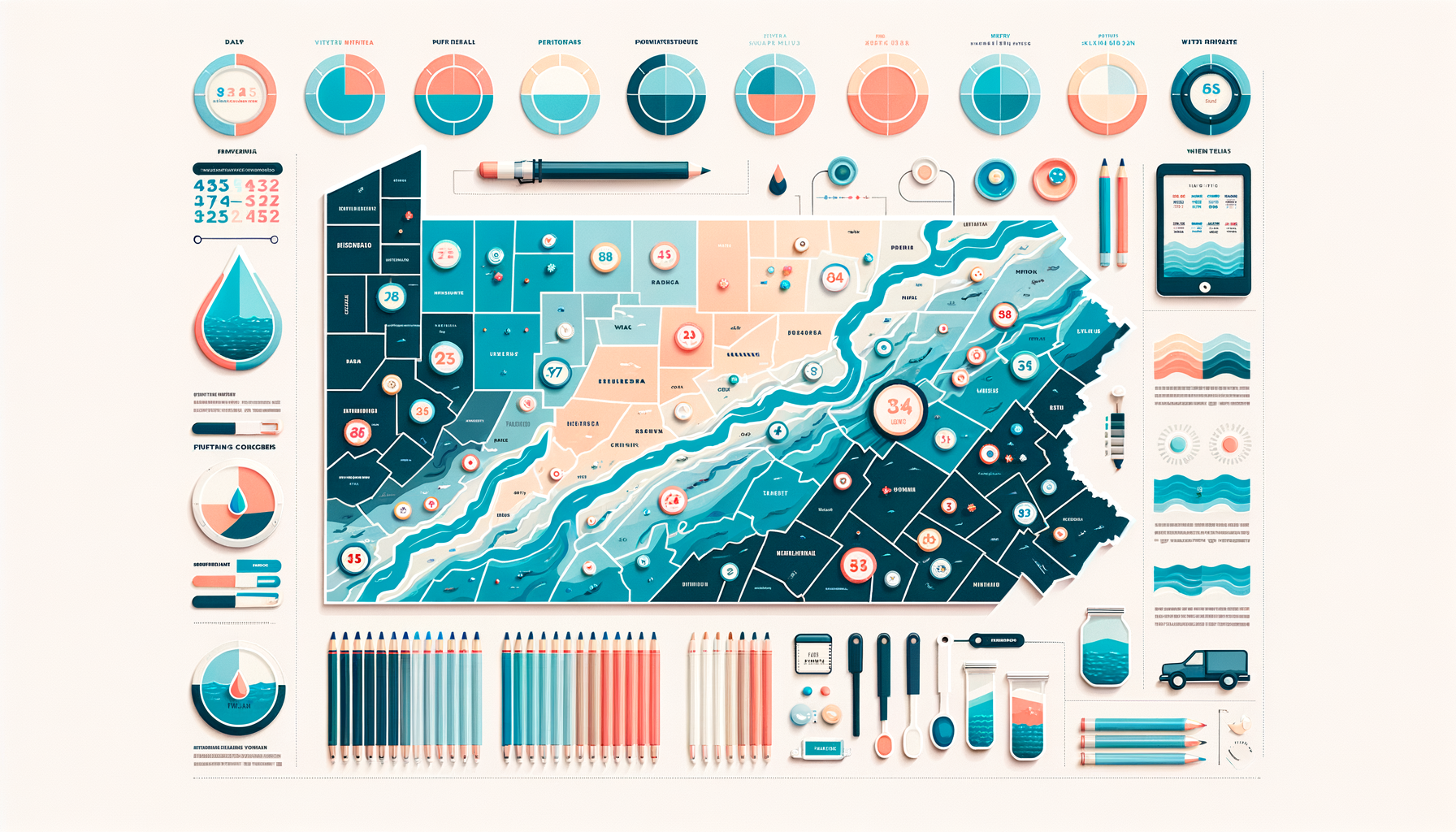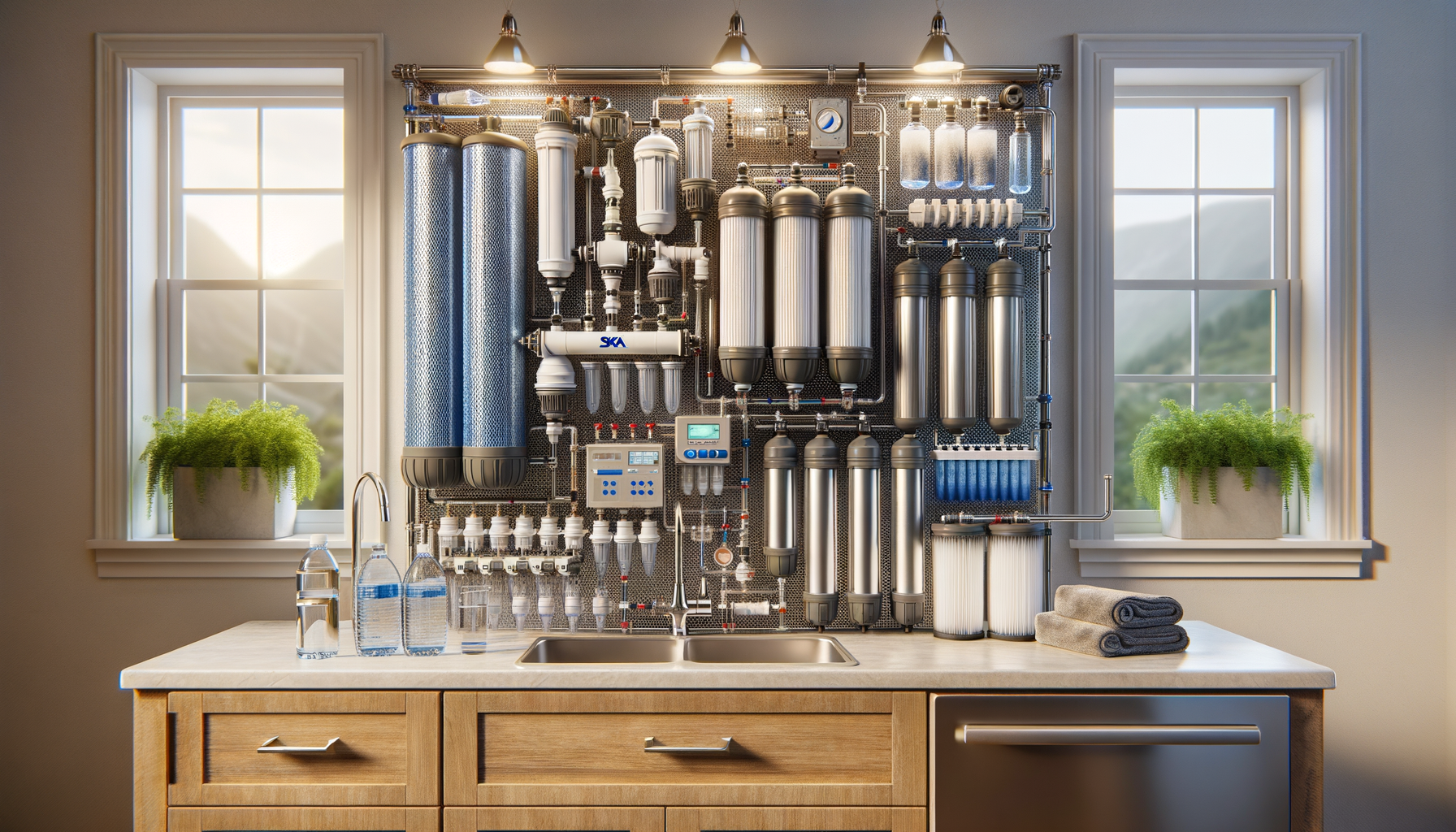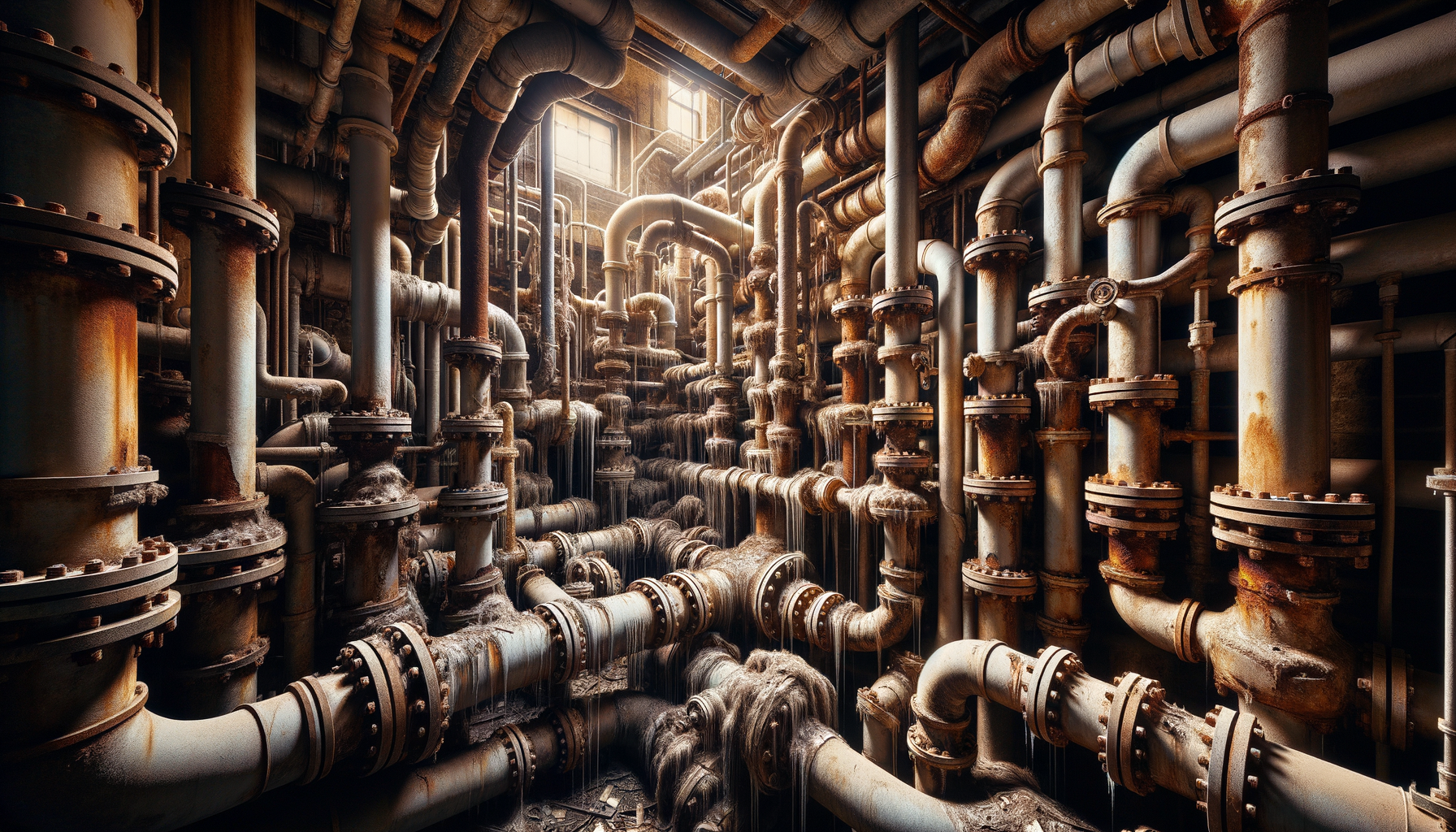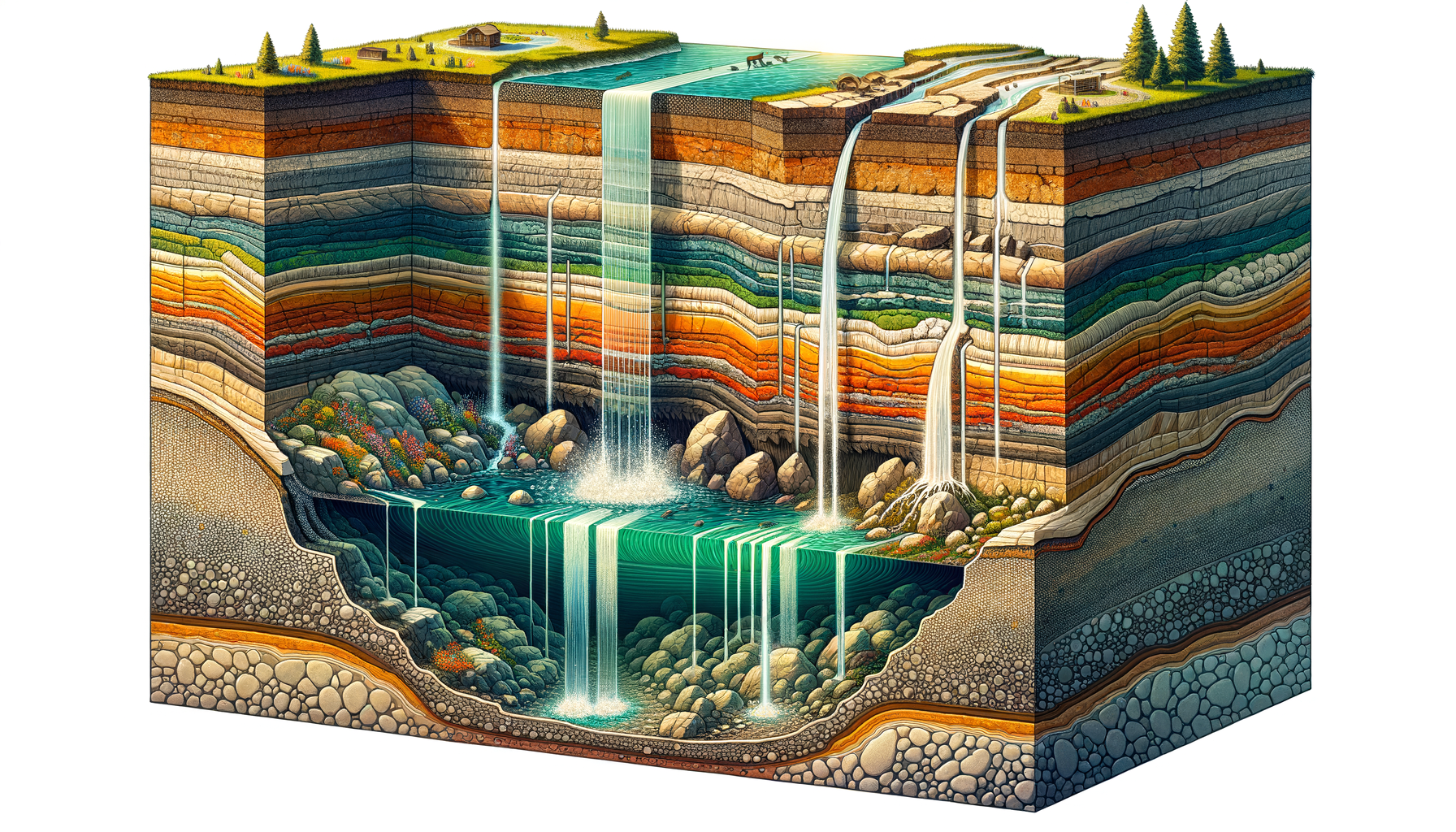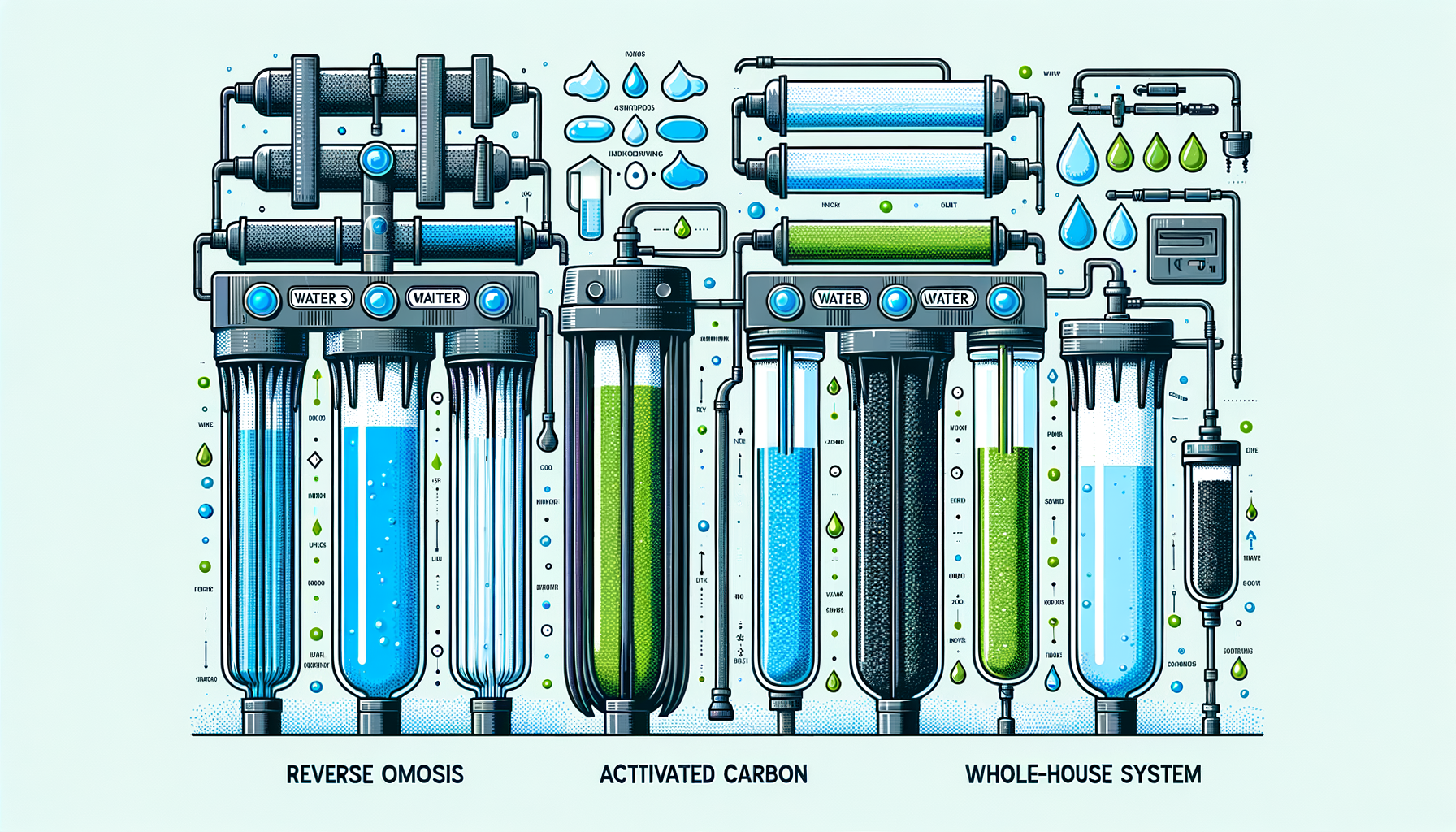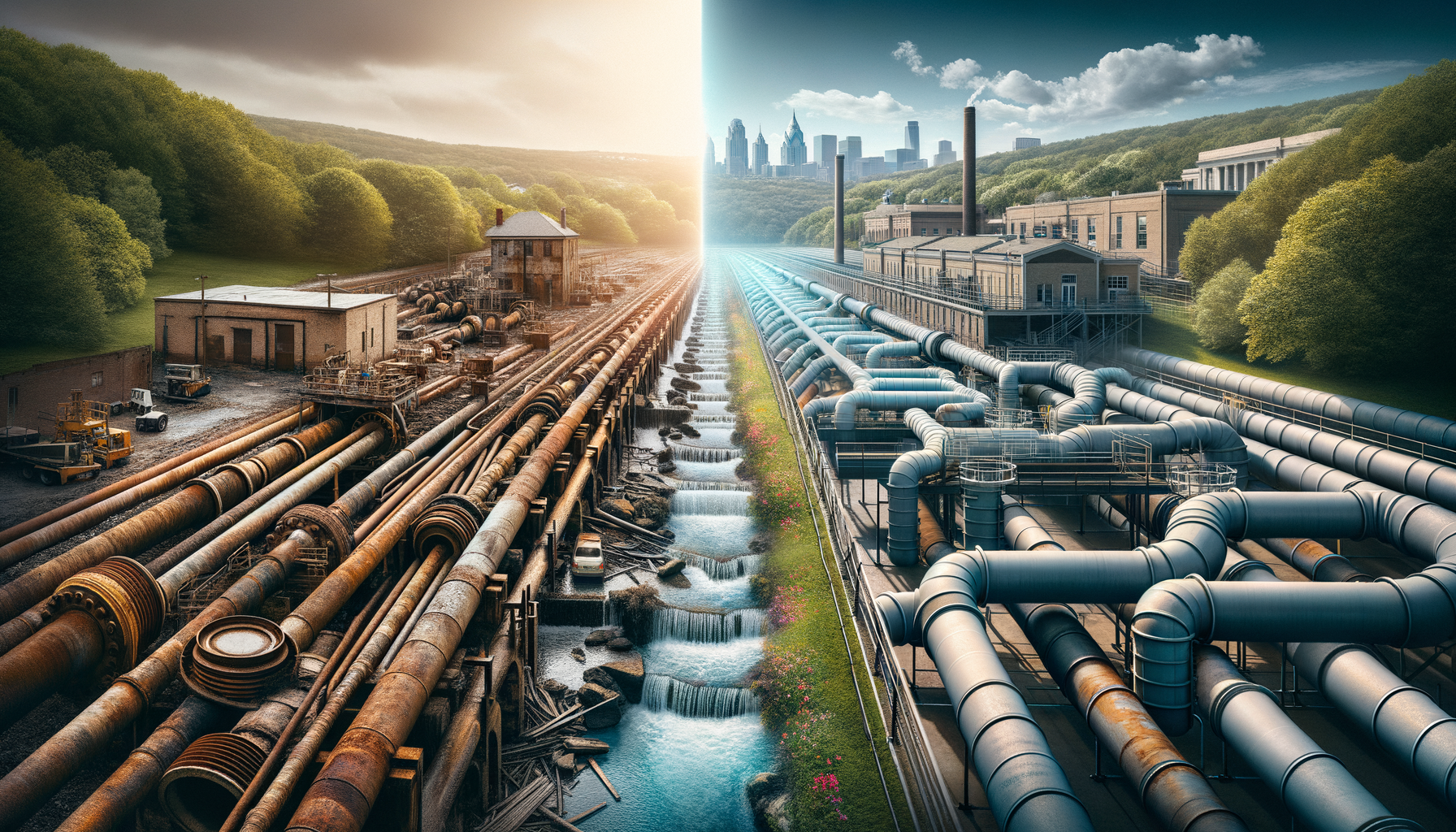Comprehensive Guide to Water Quality in Pennsylvania: Contaminants, Issues, and Water Filtration Solutions
by Ryan Moreau / updated February 15th, 2025
Pennsylvania is a state rich in water resources, boasting major rivers like the Delaware, Susquehanna, and Ohio, as well as an extensive network of streams, lakes, and groundwater aquifers. From the bustling urban centers of Philadelphia and Pittsburgh to the rural landscapes of the Appalachian Mountains, water quality in Pennsylvania varies widely. Industrial activities, agricultural practices, and historical coal mining have introduced a range of contaminants, posing challenges to public health and the environment. In this comprehensive guide, we delve into the common contaminants in Pennsylvania’s water, regional water quality challenges, and effective filtration solutions. Begin by using our Water Quality Tool to receive a customized analysis of your local water conditions.
Overview of Pennsylvania’s Water Sources
Pennsylvania’s water supply is as diverse as its landscapes. Key sources include:
- Major Rivers: The Delaware, Susquehanna, Allegheny, Monongahela, and Ohio rivers serve as vital water sources for municipalities, industry, and agriculture.
- Groundwater Aquifers: Many rural communities rely on groundwater from aquifers, which can be affected by local geology and human activities.
- Lakes and Reservoirs: Bodies of water like Lake Erie and various man-made reservoirs provide drinking water and recreational opportunities.
- Streams and Tributaries: Pennsylvania has over 86,000 miles of streams and rivers, many of which are used for local water supplies.
Ensuring water quality across these varied sources demands vigilant monitoring and advanced treatment solutions, especially given the state’s industrial heritage and agricultural economy.
Common Water Quality Contaminants in Pennsylvania
Pennsylvania’s water sources may contain a variety of contaminants due to industrial activities, coal mining, agricultural runoff, and natural geological formations. To better understand what might affect your area, start with our Water Quality Tool and then review these common issues:
1. Iron and Manganese
High levels of iron and manganese are common in Pennsylvania’s groundwater, often due to natural occurrences in the geology and exacerbated by mining activities. While not typically harmful to health, they can cause discoloration and unpleasant taste in water.
Water Filtration Options for Iron and Manganese: Whole House Water Filters with specialized media like greensand or oxidizing filters.
2. Acid Mine Drainage
Legacy coal mining has led to acid mine drainage (AMD) in certain regions, introducing heavy metals such as iron, aluminum, and sulfate into water sources. AMD can lower the pH of water, making it acidic and harmful to aquatic life and human consumption.
Water Filtration Options for Acid Mine Drainage: Reverse Osmosis Systems and pH neutralizing filters.
3. Nitrates and Nitrites
Agricultural runoff is a significant source of nitrates and nitrites in Pennsylvania’s water supplies, particularly in rural areas with extensive farming. Elevated levels can be dangerous, especially for infants, causing conditions like methemoglobinemia (“blue baby syndrome”).
Water Filtration Options for Nitrates and Nitrites: Reverse Osmosis Systems.
4. Bacterial Contamination
Private wells and surface water sources may be susceptible to bacterial contamination, including coliform bacteria and E. coli, due to agricultural runoff or septic system failures.
Water Filtration Options for Bacterial Contamination: UV disinfection systems and Reverse Osmosis Systems with UV purification.
5. Arsenic
Arsenic can be present in groundwater due to natural geological formations or industrial activities. Long-term exposure to arsenic is associated with various health problems, including skin disorders and increased cancer risk.
Water Filtration Options for Arsenic: Reverse Osmosis Systems and adsorption media filters like activated alumina.
6. Lead and Copper
Aging infrastructure in older cities like Philadelphia and Pittsburgh can lead to leaching of lead and copper into drinking water from corroded pipes and fixtures, posing health risks especially to children and pregnant women.
Water Filtration Options for Lead and Copper: Activated Carbon Filters and Reverse Osmosis Systems.
7. Radon
Radon gas can dissolve into groundwater in certain areas of Pennsylvania due to the breakdown of uranium in rocks and soil. Inhalation of radon released from water during household use can increase the risk of lung cancer.
Water Filtration Options for Radon: Aeration systems and granular activated carbon filters designed for radon removal.
8. Volatile Organic Compounds (VOCs)
Industrial solvents, fuels, and chemical spills can introduce VOCs like benzene, toluene, and trichloroethylene (TCE) into water supplies, particularly near industrial sites or landfills. These compounds are linked to various health risks, including liver and kidney damage.
Water Filtration Options for VOCs: Activated Carbon Filters.
9. PFAS (Per- and Polyfluoroalkyl Substances)
PFAS contamination has been identified in certain areas of Pennsylvania, often linked to industrial sites, firefighting foams, and manufacturing facilities. PFAS are persistent in the environment and may lead to adverse health effects, including immune system impacts and increased cancer risk.
Water Filtration Options for PFAS: Activated Carbon Filters and high-pressure Reverse Osmosis Systems.
Regional Water Quality Challenges in Pennsylvania
Pennsylvania’s diverse geography and industrial history contribute to various regional water quality challenges. According to the Pennsylvania Department of Environmental Protection (PA DEP) and the Environmental Protection Agency (EPA), key challenges include:
1. Northeastern Pennsylvania: Coal Mining Legacy
The coal regions in the northeast have a history of mining that has led to acid mine drainage, contaminating waterways with heavy metals and acidity. Efforts are ongoing to remediate abandoned mine sites and reduce environmental impacts.
This region also faces challenges with sinkholes and land subsidence due to underground mining, which can affect water table levels and infrastructure.
2. Agricultural Areas: Nutrient Runoff
Counties with intensive farming, such as Lancaster and York, face challenges with nutrient runoff leading to elevated nitrate levels in groundwater and contributing to the Chesapeake Bay’s eutrophication.
Initiatives like the Chesapeake Bay Program aim to reduce nutrient pollution through best management practices in agriculture.
3. Urban Centers: Aging Infrastructure
Cities like Philadelphia and Pittsburgh grapple with aging water infrastructure, leading to issues with lead pipes and combined sewer overflows (CSOs) during heavy rainfall, which can contaminate waterways with untreated sewage.
Infrastructure upgrades and green stormwater management systems are being implemented to address these challenges.
4. Industrial Sites: Chemical Contamination
Areas near industrial facilities, particularly in southeastern Pennsylvania, may encounter contamination from VOCs, heavy metals, and PFAS due to historical and ongoing industrial activities.
Residents in these regions should be particularly vigilant about water quality and consider appropriate filtration solutions.
General Water Characteristics in Pennsylvania
Beyond specific contaminants, Pennsylvania’s geology and hydrology influence general water characteristics that can affect household water supply.
1. Water Hardness
Many regions in Pennsylvania, especially those relying on groundwater, experience hard water due to high levels of calcium and magnesium. This can lead to scale buildup in plumbing and appliances, as well as reduced effectiveness of soaps and detergents.
For households dealing with hard water, water softeners are recommended. If you’re unsure whether you need a water softener or which type suits your family’s needs, try our Water Softener Calculator for personalized guidance.
2. Acidic Groundwater
In certain areas, particularly where the groundwater is drawn from aquifers overlying coal or shale formations, the water can be acidic (low pH). Acidic water is corrosive and can leach metals like lead and copper from pipes.
- Health Risks: Elevated levels of metals in drinking water can pose serious health risks.
- Plumbing Damage: Acidic water can corrode plumbing systems, leading to leaks and costly repairs.
Installing an acid neutralizer can help raise the pH of your water, protecting your plumbing and making your water safer to drink.
3. Sulfur Odors
Some private wells in Pennsylvania may have water with a rotten egg smell due to hydrogen sulfide gas. While not typically harmful, it can be unpleasant and indicate the presence of other contaminants.
- Source Identification: Hydrogen sulfide can originate from sulfur bacteria or decay of organic matter.
- Treatment Options: Aeration systems and specialized oxidizing filters can effectively remove sulfur odors.
Regular testing and appropriate treatment can ensure your water is both safe and pleasant to use.
Utilizing the Water Quality Tool for Pennsylvania Residents
Understanding your local water quality is crucial for ensuring safe drinking water. Our Water Quality Tool enables Pennsylvania residents to:
- Enter their zip code for a detailed analysis of local water sources
- View data on common contaminants in public and private water supplies
- Receive personalized recommendations for filtration systems based on your water quality challenges
By leveraging this tool, you can make informed decisions about the water treatment solutions best suited for your home.
Recommended Filtration Solutions for Common Pennsylvania Contaminants
Based on the prevalent contaminants identified in Pennsylvania’s water sources, the following filtration systems are highly recommended:
1. Reverse Osmosis Systems
Reverse Osmosis Systems offer comprehensive removal of a wide range of contaminants, including nitrates, arsenic, lead, PFAS, and dissolved solids. They are ideal for addressing multiple water quality issues simultaneously.
2. Activated Carbon Filters
Activated Carbon Filters are effective at removing chlorine, VOCs, pesticides, and improving taste and odor. They are suitable for municipal water supplies with known chemical contaminants.
3. Whole House Water Filters with Specialized Media
Whole House Water Filters equipped with specific media can target iron, manganese, sulfur, and sediment, ensuring clean water throughout your home.
4. UV Disinfection Systems
For addressing bacterial contamination, UV disinfection systems installed with other filtration units can effectively neutralize pathogens without chemicals.
5. Water Softeners and Acid Neutralizers
To combat hard water and acidic conditions, installing water softeners and acid neutralizers can protect your plumbing and improve water quality.
Local Water Testing Services in Pennsylvania
Accurate water testing is essential to identify the specific contaminants present in your water supply. We recommend using SimpleLab for comprehensive water quality analysis. Their easy-to-use kits and detailed lab reports empower you to make informed decisions about your water filtration needs.
Regular testing is particularly important for private well owners, as they are responsible for monitoring their own water quality.
Case Studies: Addressing Water Quality Issues in Pennsylvania
Real-world examples provide valuable insights into how various water quality challenges in Pennsylvania are being addressed:
1. Pittsburgh’s Lead Line Replacement Program
Following concerns over lead contamination, Pittsburgh launched an aggressive program to replace lead service lines and introduced orthophosphate treatment to reduce corrosion in pipes, significantly lowering lead levels in drinking water.
Community outreach and education were key components of the program, helping residents understand the risks and the steps being taken.
2. Lancaster County’s Agricultural Runoff Mitigation
Farmers and local authorities in Lancaster County have collaborated to implement best management practices (BMPs) to reduce nitrate runoff, including cover cropping, buffer zones, and nutrient management planning.
These efforts have not only improved water quality but also enhanced soil health and farm productivity.
3. Acid Mine Drainage Remediation Projects
Projects like the cleanup of the Shamokin Creek watershed demonstrate successful efforts to treat acid mine drainage using passive treatment systems such as constructed wetlands and limestone drains, improving water quality and restoring aquatic life.
Such initiatives showcase the positive impact of community involvement and sustainable remediation techniques.
Call to Action
Pennsylvania’s rich water resources are vital to its communities, ecosystems, and economy. However, the state’s complex water quality challenges require proactive management and informed action by residents. Understanding your local water challenges and implementing effective filtration solutions is essential for safeguarding your household’s health.
Begin by entering your zip code into our Water Quality Tool for a detailed analysis of your water supply. Then, explore our filter review articles to find the most effective system for your needs. Finally, confirm your water’s safety with comprehensive water testing services to ensure you have the clean, safe water your home deserves.


